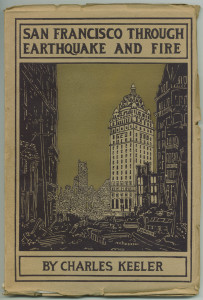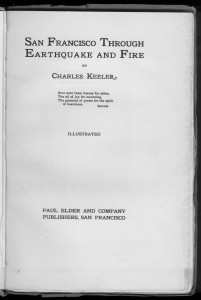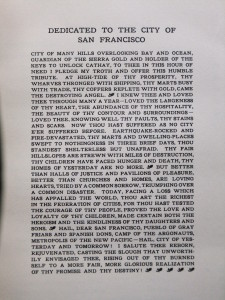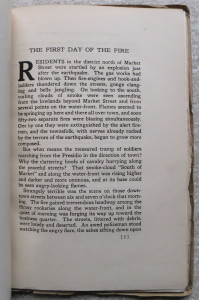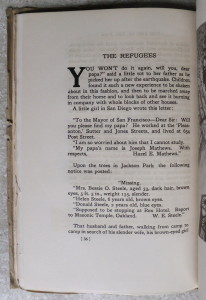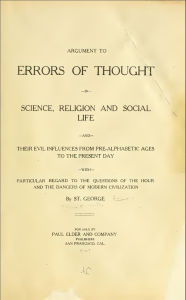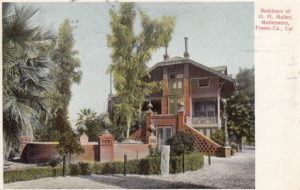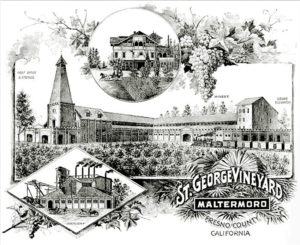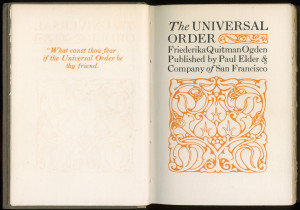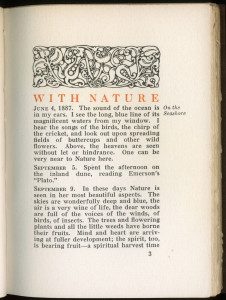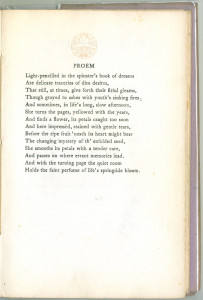Today I mark with sadness the passing of Ruth Gordon, from whom I learned most of what I know about Paul Elder. Ruth’s 1977 Ph.D. thesis, Paul Elder: Bookseller-Publisher (1897-1917): A Bay Area Reflection, from my alma mater of UC Berkeley, was never far from my side during my initial years of research. Indeed, I can reach over and pick it up from where I sit. To my lasting regret, we met only once, in January 2004 at the opening of my Paul Elder exhibition at the San Francisco Public Library. I am indebted to Ruth, for without her work, neither that exhibition nor this very website would have ever happened. May Ruth’s memory be a blessing.
Below I have included the obituary which appeared in today’s San Francisco Chronicle.
…
Ruth I. Gordon, teacher, librarian, writer, and fierce supporter of civil liberties, died at her home in Cloverdale, California on Monday, July 18, attended by her wife Viki Marugg and dear friend Linda Perkins. Ruth was a strong advocate of library services to children in schools and in the community, and was a valued colleague and mentor to librarians throughout the United States.
Ruth was born on May 13, 1933 in Chicago, the daughter of Samuel M. and Charlotte Gordon, and the sister to Robert B. Gordon, M.D. Her family moved to Forest Hills, Queens, New York where she attended grammar school at PS 144 and graduated from Forest Hills High School.
She received her A.B. from Tufts University, her M.A. from Brown University, her Masters of Library Science from University of California, Berkeley, and her PhD from Berkeley. Her research culminated in her thesis “Paul Elder: Bookseller-Publisher (1897-1917): A Bay Area Reflection.” She was very proud of her academic success, and was forever known as Dr. Ruth.
Her teaching career spanned from the Portola Valley (California) School District to the Aviano (Italy) Dependents School (USAF). Returning to California, Ruth pursued her graduate studies at Cal while she served as a lecturer and director of practicum at the University of San Francisco. During this time, she was a National Defense Education Act scholar.
Her library career brought her to serve students in rural areas of northern California: Lassen County, Cloverdale, and Petaluma. She served as a consultant for several library projects and as the managing editor of Critical Reviewing UnLtd.
She was concerned about each child with whom she worked. She knew that reading and libraries could be a place of refuge for those whose lives were chaotic and a gateway to the wider world for those whose geography or circumstances were limited. She had high standards, both for herself and for her colleagues and supervisors and would not be silent if she felt that library services were not fully supported.
Ruth held numerous positions within the American Library Association, the Association for Library Services to Children, the Notable Children’s Books committee, the John Newbery Award Committee, and the Association of Children’s Librarians of Northern California.
Her professional work and her association work were marked by her persistent advocacy for quality services for children. She was a strong proponent of the maxim “to comfort the afflicted and to afflict the comfortable” and her comments, both at the microphone and in print reflected this drive.
Her role in bringing the bigotry within the Boy Scouts of America to the forefront of America’s social conscience through the power of the library associations was her proudest achievement in many years of activism.
As an author and editor, she enjoyed great success with poetry and prose. Many of her books are standard titles for teen readers. Ruth enjoyed a collegial relationship with Charlotte Zolotow, her editor at HarperCollins and with the legendary publicist Bill Morris.
Ruth was an active hiker and loved exploring the areas around her homes in Cloverdale and the Sea Ranch. She was often seen with her camera around her neck, as she enjoyed photography. Once a season ticket holder, Ruth was a passionate but critical fan of the Oakland Athletics. Her home garden was a delight and guests were treated to meals with produce and fruits that came from the backyard. Often, they left Cloverdale with a bag of citrus from Ruth’s trees.
Ruth was predeceased by her parents, Samuel M. and Charlotte Gordon; and by her brother, Robert B. Gordon, M.D., and her sister-in-law Lois Gordon. Ruth is survived by her beloved wife Victoria Marugg, her nieces Janet Booth, Gail Kavaler, and Robin Strawbridge and five grandnieces and grandnephews. Ruth’s memories will be a comfort to her family and a blessing to those whose lives she touched over a 60 year career. – See more at legacy.com.
